On June 10, 1997, five mountain rescuers had a fatal accident in Okrešlje during a federal helicopter rescue exercise. Jani Kokalj, Boris Mlekuž, Mitja Brajnik, Rado Markič and Luka Karničar tragically lost their lives during the exercise. Thirteen minor children were left without a father. The Slovenian rescuers were aware that we had to help them. The help given was immediate, with a short-term effect. We looked for other, more permanent options.
Therefore, on October 22, 1998, Slovenian mountain rescuers, with the help of Slovenian mountaineers and with the broad support of the Slovenian public, established the Sklad Okrešelj Foundation. In this fund, initial foundation funds were collected - donations that made it possible to start a scholarship system for all thirteen children. The fund is set up in such a way that it monitors and helps children there with regular monthly contributions - scholarships until the end of school or the acquisition of the desired profession.
Rescuers, a representative of the Slovenian media (RTVS), a representative of financial institutions (NLB), a representative of PZS and a representative of URSZR participated in the first board of the fund. The bulk of the funds collected were donations from legal entities and individuals. The “GRS supporter” campaign was also partially diverted to the fund’s benefit. The campaign is still alive today and represents the bulk of the annual donations collected.
In the foundation act of the Sklad Okrešelj Foundation, it is written that all children of mountain rescuers who have had a fatal accident during a rescue operation or during training or become disabled I. or II. are entitled to help. categories.
Time passes and new social problems and thus the need for additional assistance are perceived in GRS activities. The administration of the USO recognized the necessity of alternative assistance for the children of Slovenian mountain rescuers and we proposed to also help the children of rescuers who died or became disabled I. or II. categories outside the organized activities of GRZS.
The proposal of the USO Administration was verified at the GRZS Assembly in December 2021, and legally formally approved in February 2022.
Immediately after that, a tender was held and we found that 10 minor children are entitled to help from this title. From 2022 until they come of age, the USO will pay these children, or rather their guardians, a one-time annual aid every December - “Miklavževo darilo”.
Each year, the USO will repeat the call, seeking to gain information about new needs.
We assume that the gift is a welcome financial help and a positive encouragement for the children and their loved ones.
The USO hereby implements the basic founding commitment that the families and children of the injured mountain rescuers, our colleagues and friends, are not forgotten and will receive the help that all Slovenian mountain rescuers voluntarily collect for this purpose, especially through the sale of stickers; GRS supporter.
We wish that our rescue work and other activities would not be accompanied by accidents and unfortunate events that would cause our families and children to suffer.
From the below described accidents of mountain rescuers during rescues and training, it is clear that the accident never rests. It can happen at any moment and to any of us.
The Sklad Okrešelj foundation lets us mountain rescuers know and feel that our children will not be left unattended in an accident.
Slovenian mountain rescuers understand and accept the Okrešelj Fund as a long-term solidarity mutual insurance that has helped so far and will continue to help the children of mountain rescuers in the future.
Donations can be made to TRR Ustuna Sklad Okrešelj 02010-0052385495 at NLB.
All Slovenian mountain rescuers sincerely thank you for all your donations.
Kranj, May 2023
Sklad Okrešelj Foundation
president of the board, Franci Vrankar, member of DGRS Kamnik
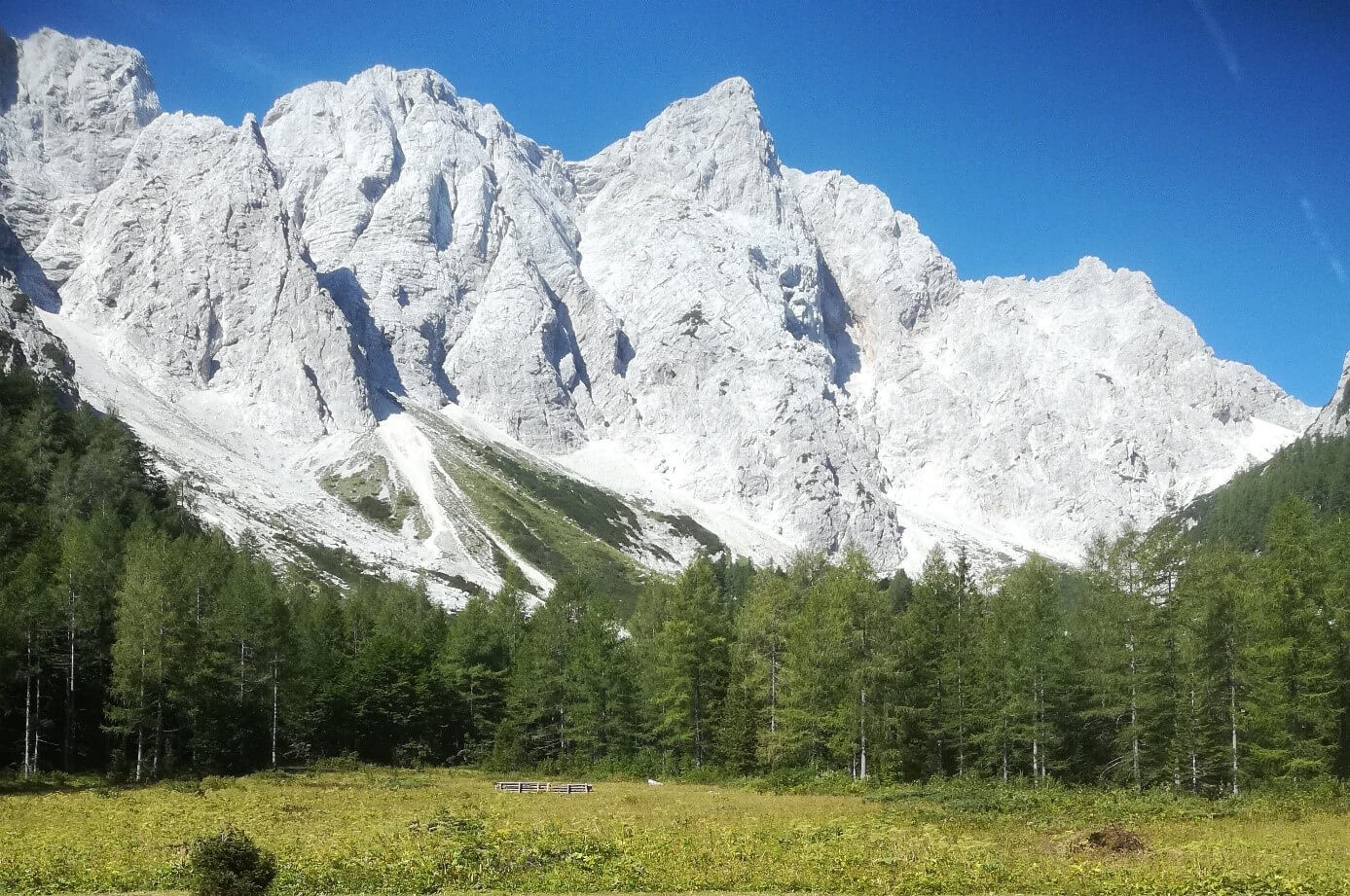
On Wednesday, April 3, 1912, professor dr. Josip Cerk took seven students to the frozen Stol (2236 m, Karavanke). He was assisted by the experienced Pavel Kunaver. Late at night, while taking care of the students, the leader of the Church himself slipped twice and had a fatal accident. The second companion took the students to Prešeren’s hut below the peak and then went to look for the missing person and to the valley for help. He returned with a few natives; they found the deceased and carried him to the valley. Kunaver once again returned to the mountain hut, accompanied by locals, experienced mountaineers and soldiers, organized by the president of the Slovenian Mountaineering Association, dr. Fran Tominšek.
On Friday, April 5, 1912, during the descent of rescuers and seven students from Stola, native Janez Finžgar from Zabreznica (cousin of the writer Finžgar) slipped and slid 500 meters down the slope. His hands were scraped to the bone, but he still went to the Zabreška planina, where he was bandaged by doctors Dr. Jernej Demšar and Dr. Josip Tičar.
After the accidents Dr. Josip Stojc in 1909 and dr. Josip Cerk, on June 16, 1912, at the initiative of dr. Josip Tičar and dr. Jerne Demšar in Kranjska Gora established the first mountain rescue station in our country. This establishment also became the official start of the operation of the Slovenian mountain rescue service. (SiOG 2/1912)
On Wednesday, August 25, 1937, in the evening, the Croatian mountaineer Ivan Kafka - Ivica climbed Veliki vrh (2088 m, Košuta, Karavanke) with his friend. During the descent towards Mount Korošica, they lost their way. Kafka was stuck in a crushing and steep world and could neither go forward nor back. Nevertheless, he wanted to go down in the dark and had a fatal accident in the process. The attendant rushed to get help in the morning and returned with the woodcutter, but they couldn’t find him. She went to Tržič for help, from where three rescuers immediately went to look for him, but they did not find him. Then they also looked for him in the valley.
On Friday, August 27, a larger group of market rescuers went to look for him and after a long effort found him. During the difficult nocturnal rescue of the deceased from the Košuta wall in the rain, the Trži rescuers Jože Javornik and Pubi Stranski rolled down the slope; the first dislocated his arm and injured his head, the second was also injured. (SiOG 11/1937)
On Thursday, August 15, 1940, 30-year-old Sava Velić from Zagreb was poisoned on Škrbina pod Ojstrica (2350 m, Kamnik-Savinjske Alps). The excursionists found him still alive, but they could not help him.
On Saturday, August 17, during the difficult transfer of the victim, forester Peter Štebe from Solčava fell so hard that he broke his right leg below the knee. They also took him to the valley and took him to the hospital in Celje. (SiOG 13/1940)
On Sunday, August 16, 1942, the Jesenice climbers Franc Kovač, Jože Vodišek - Pepi and Tone Tomazin, who were climbing the Central route in the north face of Rigljica (1911 m, Julian Alps), all progressed together in the upper part of the face tied together. The first slipped and pulled the other two behind him. During the twenty-meter fall, two had a fatal accident, and the third was very seriously injured.
They were missed by their home team on Monday. The Jeseniška mountain rescuers immediately went to get her. By evening, they were the first to climb up to them and help the survivor. On Tuesday, other rescuers climbed in and began the difficult and technically extremely demanding descent of the survivor. Tomazin was in a rescue sheet on a rescue pole, secured from above by three 30-meter hemp ropes on both sides, and was accompanied by a rescuer on each side. Six ropes and many pegs were needed for each descent. The descent was extremely time-consuming, so they reached the platform in the middle of the wall by nightfall. The bivouac was accompanied by a storm. On Wednesday, August 19, they lowered the dead two and continued to lower the severely injured person.
There was still a lot of compacted and steep snow below in the ravine, so the rescuers walked along the easier passage below it. During the descent of the upper group of rescuers, the rope was released by a fistful of thick stone, which broke through the snow vault - the mass of snow collapsed and broke. At the time, there were rescuers in the air under her, 29-year-old Miran Marn - Marjon, a technician, mechanical draftsman employed at the Jesenice ironworks, and a mountaineer, and 23-year-old Franc Talar, a stoker at the Jesenice ironworks and a skier. Parts of the mass collapsed on top of them. Marn immediately succumbed, and Talar was crushed by the edge over his legs and up to his waist. The dead climbers, who had been lowered to the bottom earlier, also came under the snow. A small lump of snow broke rescuer Lojze Tratnik’s arm.
Rolling logs of snow threatened the lower group of rescuers with the injured Tomazine. He was saved by the on-duty rescuer Miha Arih - Mihol, who pulled him under the overhang at the last moment. The heavy snow log above Talar moved again and squeezed him across the chest. They dug him out with difficulty, but were unable to revive him. Meanwhile, they immediately sent to the valley to get a pickaxe and a shovel. The next day, August 20, Tomazin was taken to the hospital in Golnik. They unearthed the Marne. The four deceased were brought to the valley by Saturday, August 22.
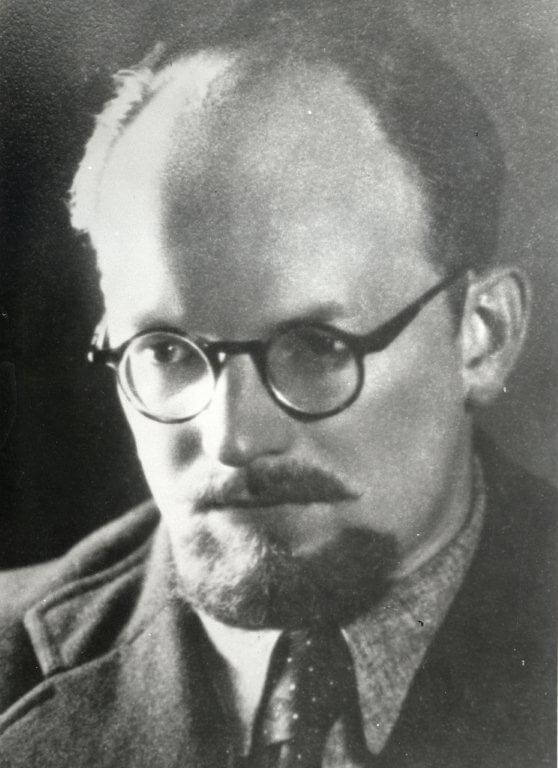
1942 +Miran Marn, Rigljica

1942 +Franc Talar, Rigljica
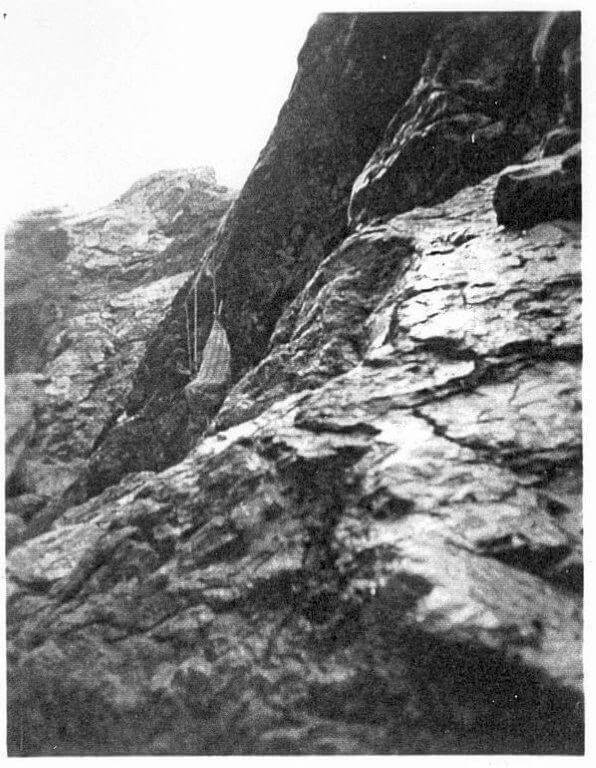
1942, lowering the injured, Rigljica (photo: Miran Marn)
The German occupation authorities then even sent one of the rescuers to a rescue course in Austria, and later completely banned visiting the mountains. (SiOG 3/1942)
In the second half of June 1975, the first three-day helicopter rescue course for mountain rescue doctors from all over Slovenia was held in Jezersko. It was led by dr. Gorazd Zavrnik and pilots Andrej Andolšek, Drago Hanžel and Franc Štajer.
A few days later, Sunday, July 29, 1975, the weather was foggy and rainy. Mountaineer Franc Gruden from Ljubljana descended from Jezerska Kočna towards Češka koča. In the upper part of the route, he slipped and seriously injured his head, chest, hands and teeth.
Due to poor information and insufficient indication of the place of the accident, the rescue operation was very delayed. The Carniola mountain rescuers, led by Dr. Gorazd Zavrnik and Emil Herlec brought the victim to Češka koča. A helicopter with pilot Fran Štajer was waiting for him there. The weather worsened, night was approaching. The severely injured person had to be carefully and quickly taken to the hospital. The helicopter took off from Češka koča and immediately afterwards crashed and burned in the fog and rain at Pod Kanceljni at the foot of Ledin (1700 m, Kamnik-Savinjske Alps). In addition to the victim, 48-year-old Franc Štajer, a pilot from Medvod, member of the GRS Kranj station, and 45-year-old Dr. Gorazd Zavrnik, specialist pulmonologist and head of the GRS Kranj station.
At first, very little was known about the causes of the accident. The analysis showed that the accident occurred due to several unfortunate circumstances, poor communication and failure to follow the IKAR rule that a helicopter cannot fly safely in a mountainous world in fog.
In addition to the death of the rescuers and the victim, the first helicopter accident also caused family hardship. Six school children remained who were not taken care of. (SiOG 7/1975)
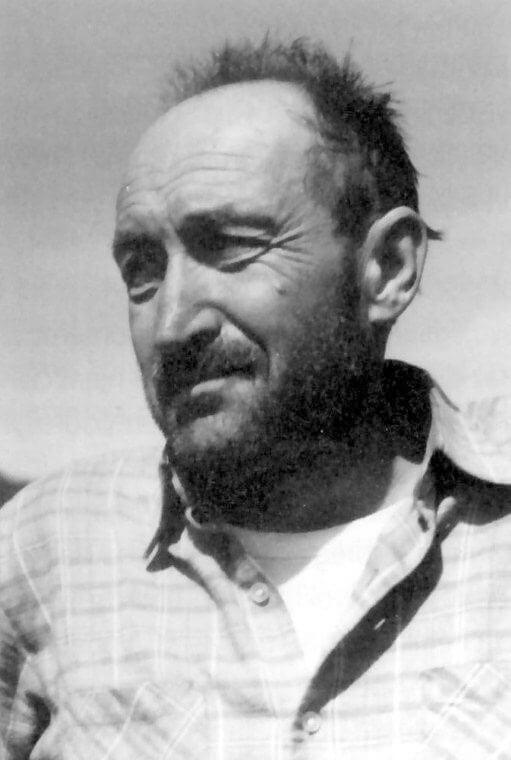
1975 +dr. Gorazd Zavrnik, helicopter crash, Ledine
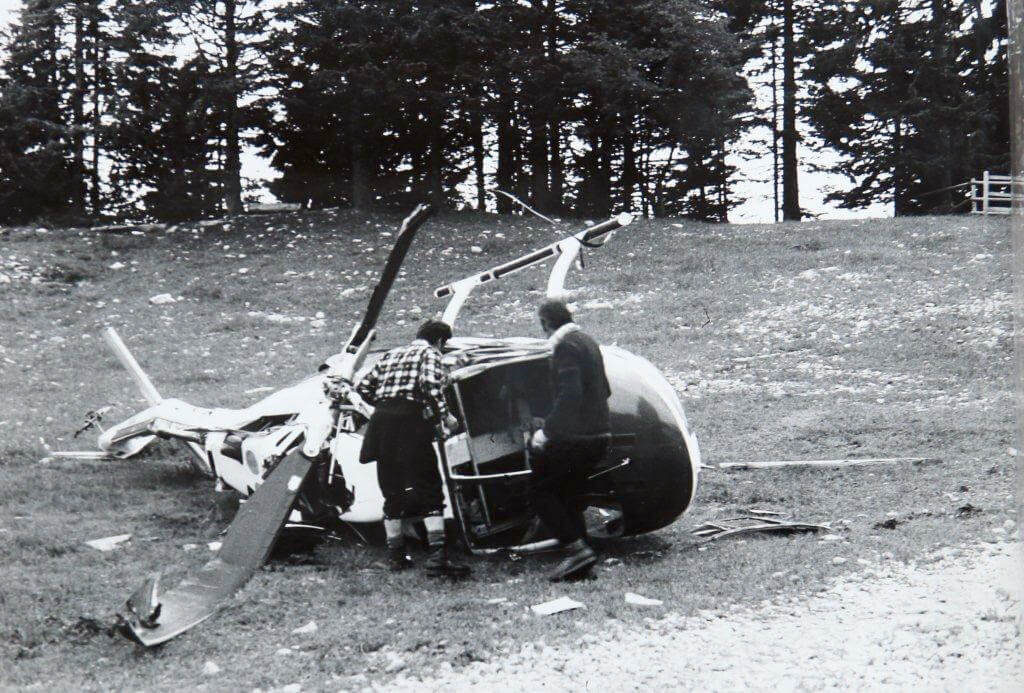
1979, Krvavec, helicopter crash
On Sunday, July 8, 1979, a training course for pilots, mechanics and rescue pilots was held at Gospinac na Krvavec (1491 m, Kamniško-Savinjske Alpe). The standing helicopter was lined with a plank due to the uneven ground. During the completion of the course, immediately after takeoff, the helicopter got stuck with its skid on a padded board and flipped onto its side. In the process, 41-year-old Volodja Tkačev, a federal pilot instructor from Ljubljana, head of the school center of the aviation company Inex-Adrie and a member of the GRS Kranj station - who was especially dedicated to the professional training of mountain rescue pilots - fatally injured his head. (SiOG 11/1979)
On Saturday, January 9, 1982, a skier from Ljubljana slipped and was seriously injured in the Žagarje graben pod Voglo (1540 m, Julian Alps) on frozen snow or icy ground covered with a thin layer of snow.
29-year-old Franc Zupan, originally from Straža pri Novem mesto, a militiaman in Bohinj, who tried to help an injured skier without any equipment, also slipped while the rescuers were coming to him. At the same time, he pulled another rescuer with him. He broke the back of his head, had internal injuries and succumbed, while the other rescuer was seriously injured. (SiOG 2/1982)
On the evening of Thursday, December 31, 1992, a minor rode a moped from Mount Polog towards Zatolmin and met his friends on a small bridge over the V Zali gorge above the Tolminka stream (Julian Alps). At 24:00 he suddenly staggered over the bridge into the ravine, slid 80 meters and stopped injured in a hollow. Due to injuries and the difficult world, he was unable to climb. He anchored behind a tree and called for help. The friends immediately informed the police.
On Friday, January 1, 1993, at 12:16 p.m., immediately after the accident, two Tolmin policemen went to the scene of the accident and tried to help the victim above the Tolminka stream. At the same time, 24-year-old Jakob Ornik, a policeman from Tolmin, untrained and unequipped, slipped on an icy spot before the arrival of Tolmin’s mountain rescuers, fell into a 150-meter-deep ravine, and died immediately due to numerous injuries.
Tolmin mountain rescuers were informed about the first accident half an hour after midnight. The first six rescuers helped the first casualty and lifted him out of the ravine at 4 o’clock. Due to the falling rocks, it was impossible to rescue both at the same time. Another group of rescuers found Ornik in the water at the bottom of the ravine. The demanding rescue was hindered by the difficult and crushing world, severe cold, wind and darkness. (SiOG 1/1993)
On Wednesday, January 17, 1996, an alpinist was climbing the Domžalska Grapa in the eastern face of Brana (2252 m, Kamnik-Savinjske Alpe). On the summit ridge, just below the top of Brane, he slipped on the ice and injured both ankles and hands. Passing climbers treated him urgently and informed the Kamni mountain rescuer, who happened to be on the Kamniške saddle. The rescuer radioed the other rescuers and went to the top to the victim.
Due to the fog in the valley and the evening, the helicopter could not take off. 17 rescuers came to Kamniška sedlo. At first, they had the intention of taking food, drink and clothes to the top of Brana, but then they decided to also carry out the classic transport of the victim. The first group of four set off with their equipment up the north slope towards the summit. During this night rescue, at 10:50 p.m., a small avalanche was triggered on the northern slope, and as a result, 40-year-old Janez Plevel - Pubi, an experienced alpinist from Mekinje pri Kamnik and a mountain rescuer at the GRS Kamnik station, slipped. He couldn’t stop with his heavy backpack on the steep, lumpy and icy slope, even though he braked with an ice ax. He slid 250 meters to Lijak and fell over a hundred-meter wall onto the snowfield below the wall. He fatally injured his head. The injured alpinist was taken from the top of Brane by a helicopter the next morning. (SiOG 2/1996)
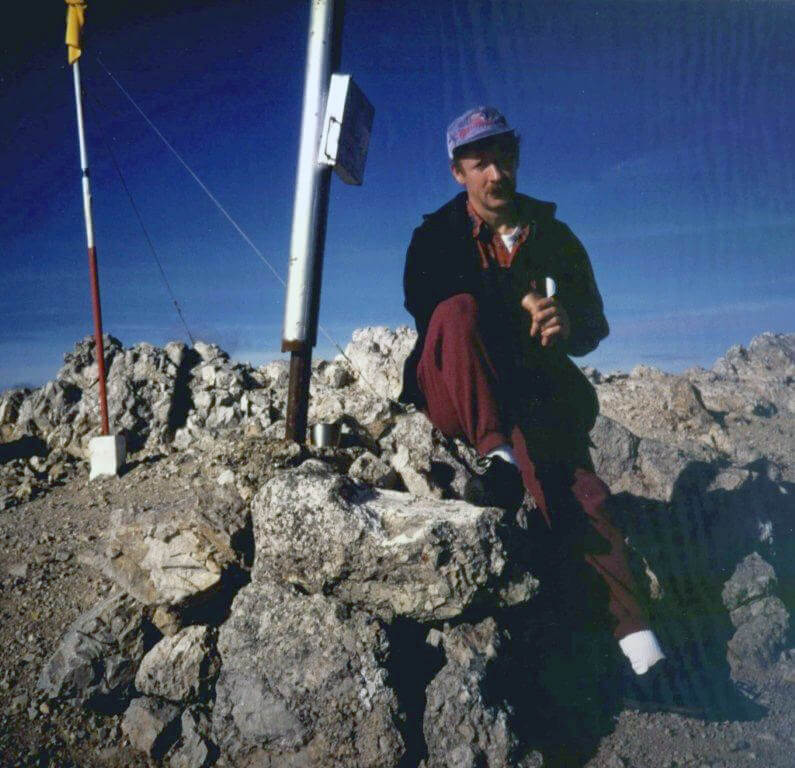
1996 +Janez Plevel - Pubi, Brana
On Tuesday, June 10, 1997 at noon, a helicopter accident occurred during an exercise of Slovenian mountain rescue pilots in Okrešlj. Experienced mountain rescue pilots, 44-year-old Mitja Brajnik, a law graduate from Bled, head of the Police Inspectorate in Kranj and head of the GRS Kranj station and instructor; 41-year-old Luka Karničar, principal of the school in Preddvor, head of the GRS Jezersko station and mountain guide from Zgornje Jezersko; 35-year-old Rado Markič, a mechanical engineer from Zgornje Jezerski; 42-year-old Dr. Janko Kokalj, a general practitioner from Kranjska Gora, and 45-year-old Boris Mlekuž, a chemical technician from Bovac and a candidate for aviator rescue instructor, were at the anchorage in the north face of Turske Gora (2251 m, Kamniško-Savinjske Alpe). The helicopter successively brought two air rescuers to them and took the previous rescuer-casualty pair on the steel wire at the end of the winch.
Just before the accident, the helicopter had already risen above the anchorage in the wall, and two members of GRS station Kamnik, doctor Dr. Miro Ažman as the “casualty” in a stretcher, and rescue pilot Marjan Kregar as a companion. Unfortunately, during lifting, there was still an uninterrupted connection to the anchor point (one of the self-securing ropes on the anchor point fell on the stretcher with the rescue bag and got stuck). Thus, the helicopter tore all five rescuers from the anchorage, and then the intermediate line broke, so they fell into the depths and all immediately succumbed. With difficulty, Kregar kept the stretcher completely tilted and prevented Ažmanova from slipping out of it.
Several reconstructions and analyzes of the accident confirmed that the stretcher couple did not cause the accident. It was found that the stretcher swung under the helicopter during takeoff and accidentally got caught under one of the lifeguards’ self-belay line at the anchorage, jamming the helicopter. The pilot had to add gas to avoid crashing into the wall. In doing so, he tore off five lifeguards tied to the common rope of the anchorage. After breaking the cord, they fell into the abyss. (SiOG 12/1997; Dr. Iztok Tomazin: Tragedy in Turska Gora. Didakta Publishing House, Radovljica 2007.)
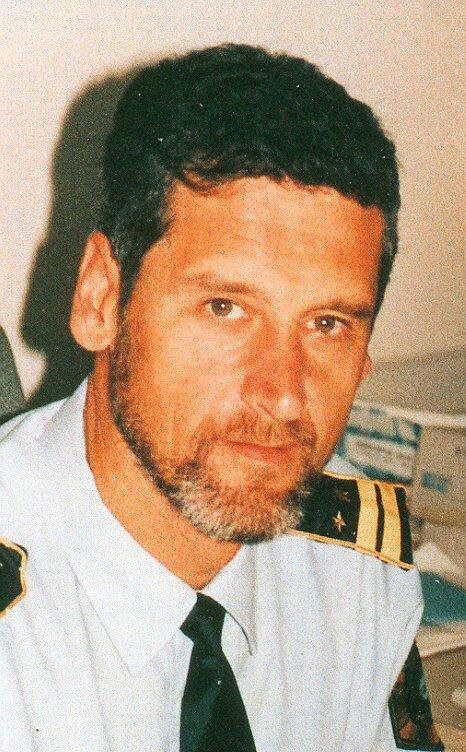
1997 +Mitja Brajnik, Okrešelj
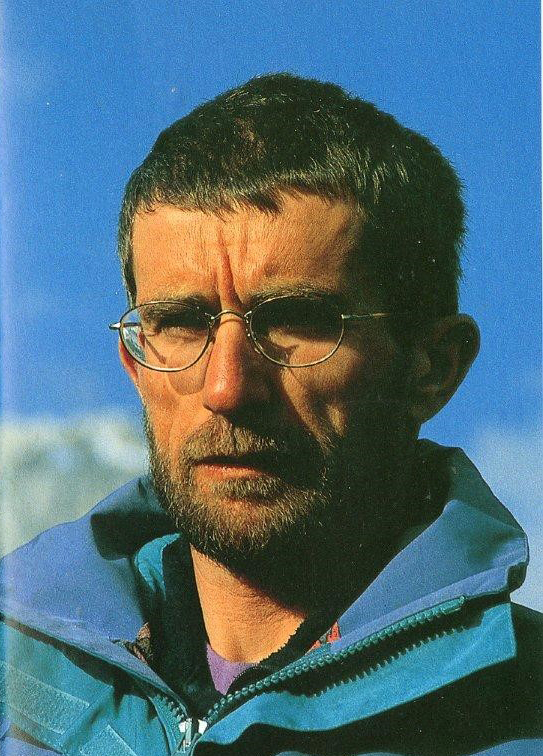
1997 +Luka Karničar, Okrešelj

1997 +dr. Jani Kokalj, Okrešelj
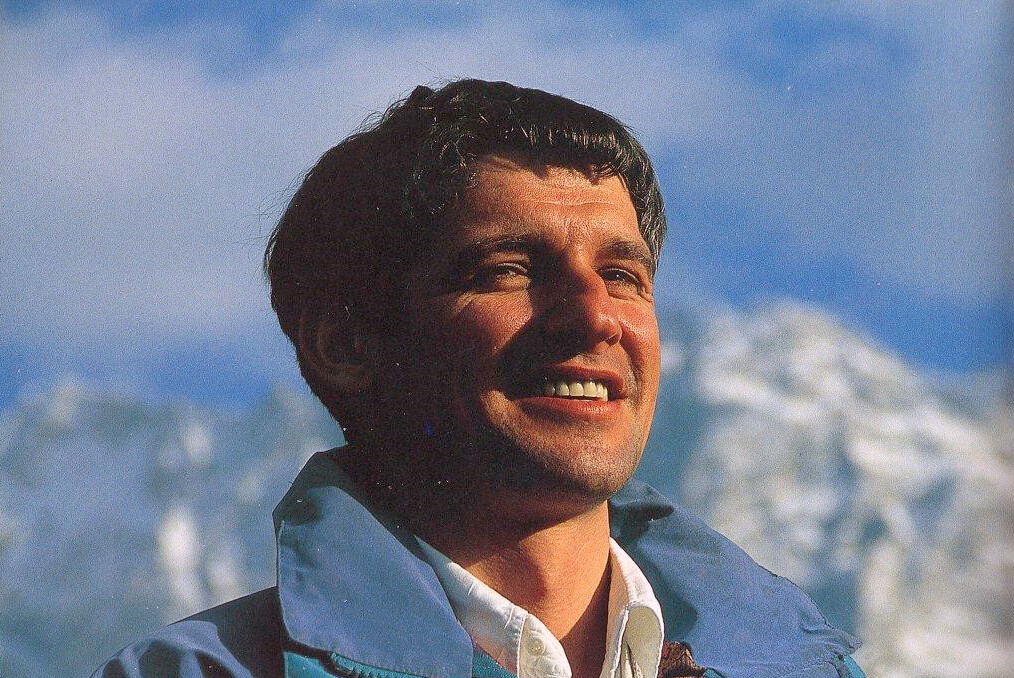
1997 +Rado Markič, Okrešelj
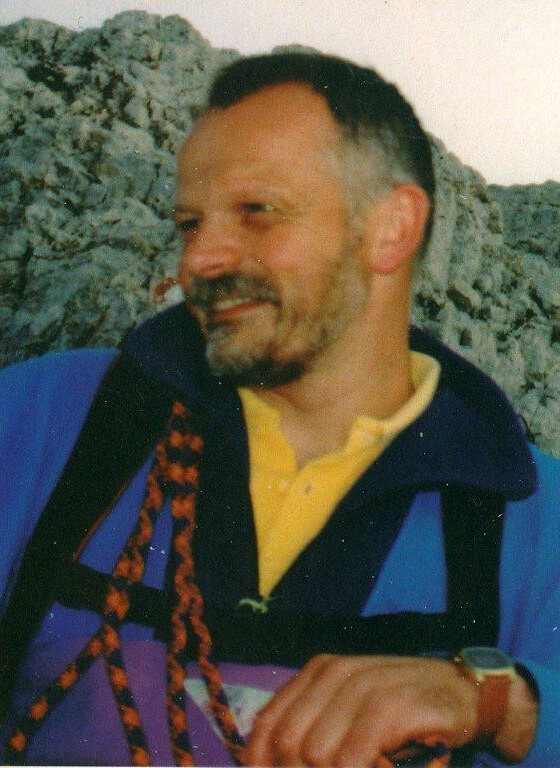
1997 +Boris Mlekuž, accident, Okrešelj
On Monday, February 3, 2003, at 4 p.m., two Hungarian mountaineers climbed from the Krma valley over Kurica to Konjski preval (2020 m, Julian Alps). The weather was clear, they did not know the weather forecasts about the imminent deterioration. In a steep part, one of them slipped and broke his ankle when he fell. The passenger climbed Kredarica and reported the accident.
At 7 p.m., the first seven professional mountain rescuers set off. Four of them were in the faster part of the group and they hurried to the shepherd’s house in Zgornja Krma and turned right towards Konjske preval. At first the weather was still good, but at 20:00 the weather changed with heavy snowfall and hurricane-force winds. The first rescuers nevertheless managed to find the victim, helped him and prepared him for transport. The other three climbed over the Kurica, while the third trio of rescuers and a doctor reached the shepherd’s hut in the meantime.
The other three were already in the upper part of Kurica, when at 10:10 p.m. an avalanche of old snow started and buried all three. Jure Noč was partially buried and immediately started looking for the other two. He found the buried Iztok Arnol, his hand peeking out of the snow, and dug him out of the avalanche. 55-year-old Martin Čufar, mountain rescuer, member of the GRS station from Mojstrana, was found in less than 15 minutes with the help of an avalanche woodpecker. The doctor and others immediately began to revive him, digging him out of the snow in the meantime. With a broken nape of the neck, help was in vain. The rescuers withdrew from the avalanche with the victim and descended into the valley. The Hungarian mountaineer was taken away the next day at 9 a.m. by a private helicopter, which took off during a brief improvement in the weather. (SiOG 6/2003)
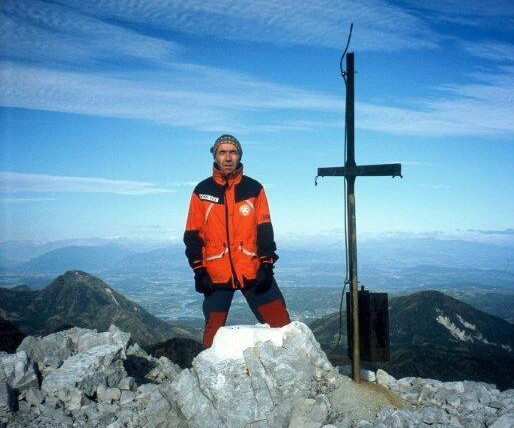
2003 +Martin Čufar, above Krma
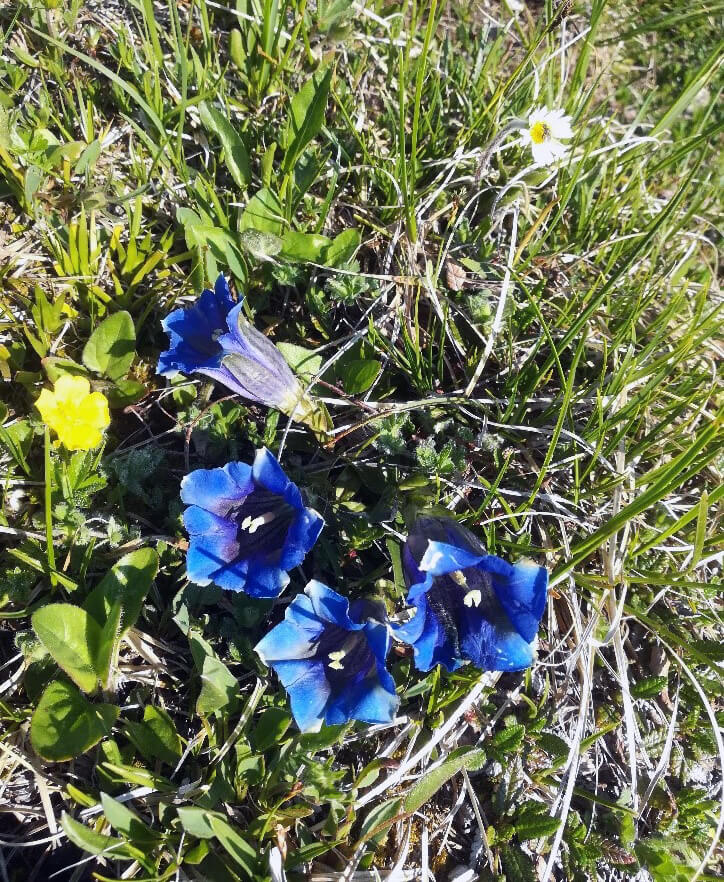
Let us repeat the thoughts of the mountain rescuers from Kamnik in the event of a fatal accident during the rescue on Bran in 1996 (from the book History of rescue in the mountains above Kamnik by France Malešič and colleagues, PZS 2002, page 424):
“As mountain rescuers, we have a great reputation and you could almost say fame. This means a lot to us and is a great incentive for us in our work. This is actually what we feed on. With all this reputation, mountaineers and the public expect us to do everything possible, and at the same time they believe that we are really capable of doing everything.
We ourselves are often convinced that there are no obstacles for us. Sometimes we forget that we are ordinary people with all our weaknesses and weaknesses and we are not supermen or supermen. Sometimes there is no one among us who thinks that during the rescue we are in much more danger than we ourselves realize, and stops our step. In such circumstances, a wrong decision is also possible.”
We always have an extremely strong desire to help all those who need help in the mountains - as soon as possible and as well as possible. At the same time, we often fail to think that only our closest relatives and friends, and above all our children - orphans, to whom we can no longer tell how beautiful it is in the mountains, and nothing more we can do for to be provided for.
Prepared by: France Malešič, retired pediatric doctor, alpinist, mountain rescue aviator, member of the GRS Kamnik Society
Data on accidents are taken from the book, where there are more detailed descriptions and sources of data:
France Malešič: Memory and reminder of mountains. Chronicle of fatal accidents in Slovenian mountains. Radovljica, Didakta publishing house 2005 (SiOG)
The photos of the victims in Turska gora above Okrešlje are from the book Tragedy in Turska gora by dr. Iztoka Tomazina, published by Založba Didakta, Radovljica 2007.
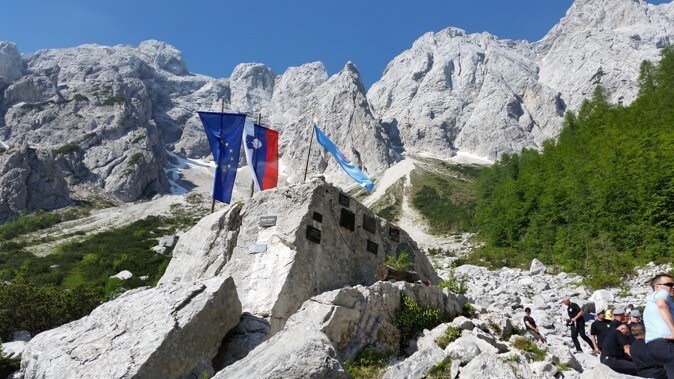
Memorial at Okrešelj

1997, accident at Okrešelj
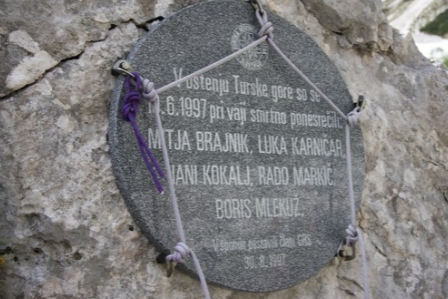
Memorial plaque at Okrešelj
May 2023,
Sklad Okrešelj Foundation
We thank our long-time supporters who help us on our way.


